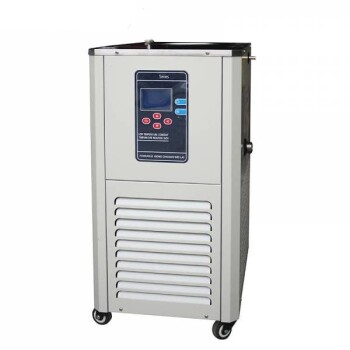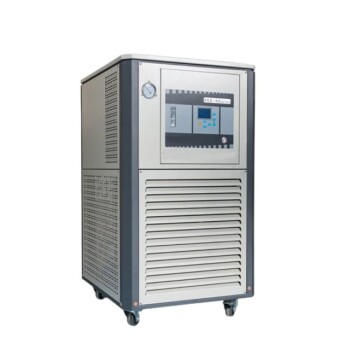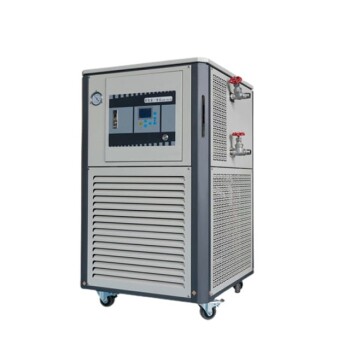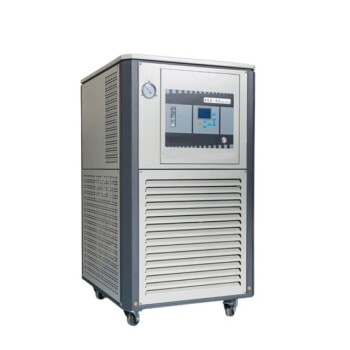When controlling the temperature of a five-port water bath electrolytic cell, the primary precautions are to maintain a stable, precise temperature to ensure data integrity and to handle the equipment carefully to prevent personal injury and material damage. You must never heat the entire assembly, as the PTFE lid can permanently deform, and you should always avoid direct contact with heated surfaces to prevent burns.
The core challenge is balancing the need for thermal control, which is essential for accurate electrochemical measurements, with the physical limitations of the cell's materials, particularly the glass body and the PTFE lid.
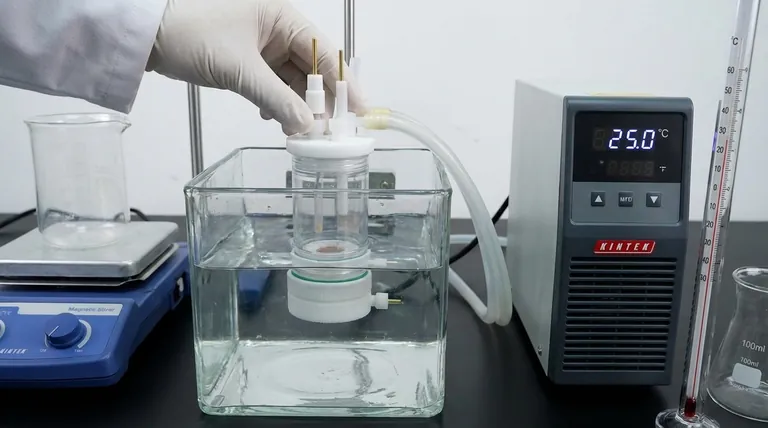
Why Precise Temperature Control is Critical
Temperature is a fundamental parameter in electrochemistry that directly influences reaction kinetics, diffusion rates, and electrode potentials. Failure to control it precisely undermines the validity of your results.
The Impact on Experimental Accuracy
Slight variations in temperature can significantly alter the rate of your electrochemical reaction. This directly affects measurements like current density and reaction efficiency.
An unstable temperature makes it impossible to achieve reproducible results, which is the cornerstone of sound scientific investigation.
Maintaining Equipment Integrity
The electrolytic cell is constructed from materials with different thermal properties. Glass and Polytetrafluoroethylene (PTFE) expand and contract at different rates.
Exposing the entire assembly to excessive heat can cause the PTFE lid to expand and warp permanently, compromising the seal and ruining the component.
Understanding the Physical Hazards and Material Limits
Beyond data accuracy, improper temperature control introduces significant risks to both the operator and the equipment itself.
The Risk of Thermal Shock to Glass
The cell body is made of glass, a fragile material susceptible to thermal shock. A rapid change in temperature can cause the glass to crack or shatter.
Always ensure gradual heating and cooling cycles when using the water bath circulation system. Never subject the cell to sudden, extreme temperature differences.
The Problem of Material Mismatch
The PTFE lid is designed for chemical resistance, not high-temperature stability. If autoclaved or excessively heated, it will expand. Unlike the glass, it may not return to its original dimensions upon cooling.
This mismatch in thermal behavior is why only the glass body can be sterilized by autoclaving; the complete cell assembly cannot.
Essential Burn Prevention Measures
The water bath and the electrolytic cell can reach high temperatures. Direct skin contact can cause serious burns.
Always use appropriate personal protective equipment (PPE), such as heat-resistant gloves, and be mindful of hot surfaces during and after the experiment.
Common Pitfalls to Avoid
Even with the best intentions, several common mistakes can compromise safety and experimental outcomes.
Overlooking Equipment Calibration
Do not assume the temperature displayed on your water bath controller is accurate. Regularly check the thermometer and controller against a calibrated standard.
An uncalibrated system provides a false sense of control and can be a consistent source of experimental error.
Assuming Uniform Temperature
Just because the bath is set to a specific temperature does not mean the electrolyte inside the cell is at that exact temperature.
Allow sufficient time for the system to reach thermal equilibrium before beginning any measurements. For high-precision work, consider placing a separate, calibrated thermometer directly within the cell.
Making the Right Choice for Your Experiment
Your approach to temperature control should align with your primary objective.
- If your primary focus is high-precision, reproducible data: Prioritize temperature stability and verify the electrolyte temperature directly, allowing the system to fully equilibrate before measurement.
- If your primary focus is equipment longevity: Never heat the entire assembly, avoid rapid temperature changes to prevent thermal shock, and always handle the fragile glass components with care.
- If your primary focus is operator safety: Always use appropriate PPE to handle hot components and be constantly aware of the potential for burns from the water bath and cell.
Ultimately, mastering temperature control is fundamental to achieving reliable results and ensuring a safe laboratory environment.
Summary Table:
| Precaution | Purpose | Key Consideration |
|---|---|---|
| Avoid heating entire assembly | Prevent PTFE lid deformation | PTFE expands and may not return to original shape |
| Prevent thermal shock | Protect glass cell body | Gradual heating/cooling cycles only |
| Use calibrated temperature control | Ensure experimental accuracy | Verify against calibrated standard |
| Allow thermal equilibrium | Achieve consistent results | Wait before starting measurements |
| Wear appropriate PPE | Prevent burns | Handle hot surfaces with heat-resistant gloves |
Need reliable temperature control for your electrochemical experiments? KINTEK specializes in precision lab equipment and consumables, including water baths and electrolytic cells designed for accurate thermal management and operator safety. Our solutions help you achieve reproducible results while protecting your valuable equipment. Contact our experts today to discuss your specific laboratory requirements and discover how we can enhance your electrochemical research.
Visual Guide
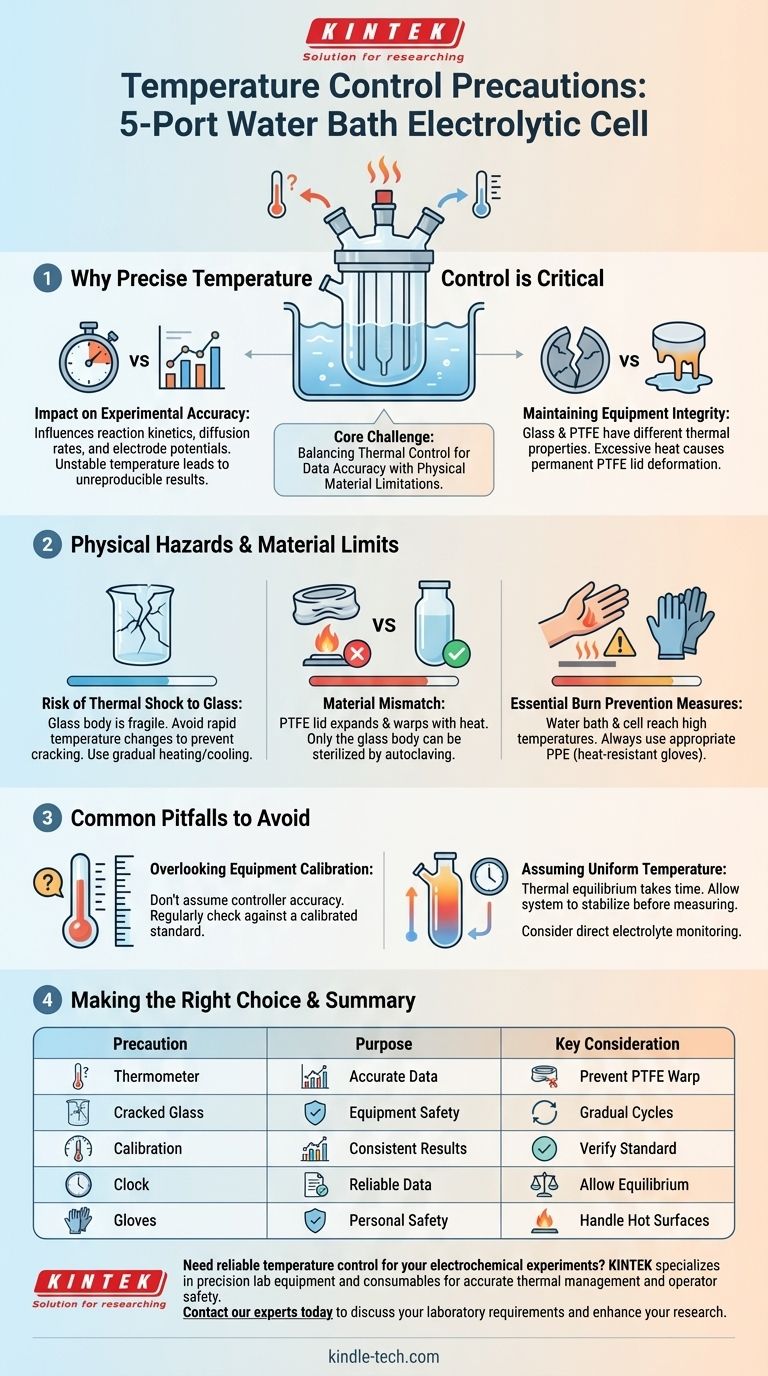
Related Products
- Multifunctional Electrolytic Electrochemical Cell Water Bath Single Layer Double Layer
- H-Type Double-Layer Optical Electrolytic Electrochemical Cell with Water Bath
- Quartz Electrolytic Electrochemical Cell for Electrochemical Experiments
- Electrolytic Electrochemical Cell for Coating Evaluation
- Customizable CO2 Reduction Flow Cell for NRR ORR and CO2RR Research
People Also Ask
- What does the routine maintenance of a double-layer water-bath electrolytic cell involve? A Guide to Ensuring Precision and Longevity
- What are the pre-use procedures for a five-port water bath electrolytic cell? A 4-Step Guide for Reliable Results
- What are the key features of a double-layer water-bath electrolytic cell? Achieve Precise Temperature Control for Your Experiments
- What are the post-use procedures for a five-port water bath electrolytic cell? Ensure Safety & Longevity
- What are the key features of the five-port water bath electrolytic cell? Precision Control for Electrochemical Experiments






